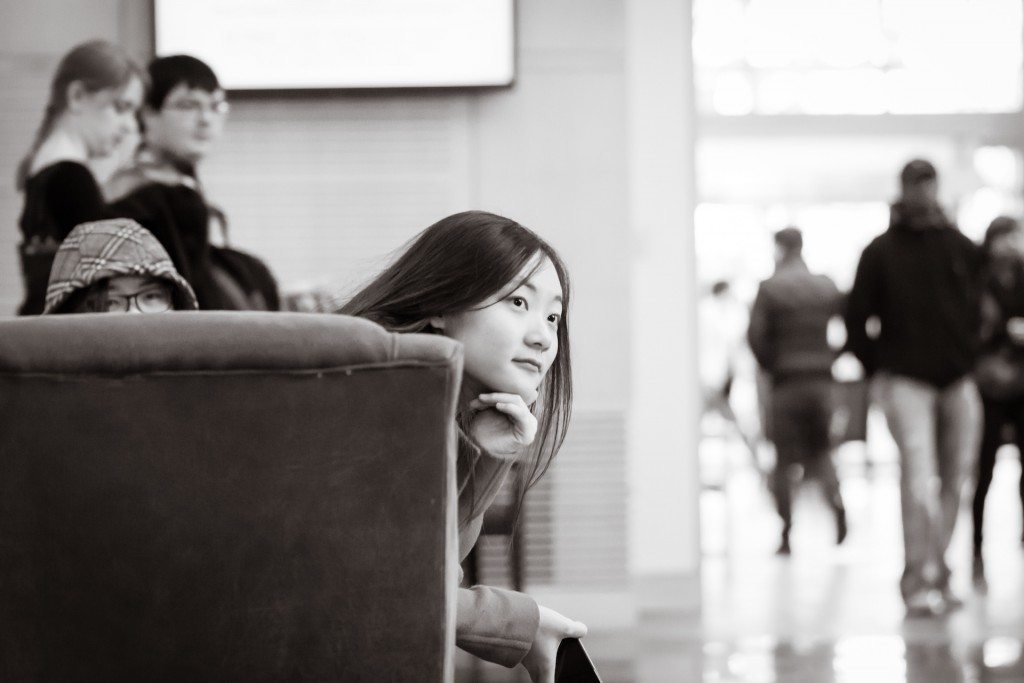The recent search for two paid contributors to Write It Sideways has yielded wonderful results. I received more applications than I could have imagined, and had the enormous challenge of narrowing down the list to just a handful of very talented writers. I look forward to sharing the most promising articles with you during November.
Today’s post is written by Cindy Huff. Thanks, Cindy!
People-watching is an essential part of being a writer.
I love to people-watch. I find the way people walk and the clothing they wear—even how they carry their cell phones—fascinating. Because I don’t know them personally, I can imagine a whole life for them. My mind creates struggles and scenarios involving these strangers that pass through my life for an hour, a minute, or a nanosecond.
Characters in fiction come from real-life people. Our mental camera brings to mind that too-thin woman who moves like a gazelle as she washes her windows, the autumn wind almost blowing her over. Maybe another character is a compilation of a brother’s bullhorn laugh, an old math teacher’s comb-over hair style and a politician’s voice pattern. Real people make your characters more believable.
People-Watching in New Surroundings
I just returned from a trip to the Philippines, where my mind and my camera captured many interesting characters. I interacted with so many people the three weeks I was there. Some, I got to know intimately; others I noticed in passing.
Three of the images I captured on film come to my mind:
- The 3-year-old boy who can’t sit still for a minute. If he wasn’t pushing his toy car across the floor he was pushing a plastic chair across the church. Such energy could fuel a light bulb.
- The elderly man whose job it was to the cut the grass at the resort with hedge clippers. The gentlemen squatted with his backside inches from the ground. Moving his feet ever so slightly, he clipped the grass to look like golf course turf.
- The hotel security guard dressed in black, toting a large shotgun as he paces across the front of the building. The set of the guard’s face changing from deadly stern to a friendly smile as he opens the door for the hotel guests.
Each of these people could be the basis for a character in a story. All of them have unspoken thoughts and desires that I can bring to life as a writer. My mind pictures them in different places.
Perhaps the little boy is climbing up the cabinet in search of forbidden things. The elderly man stretches his aching body as he walks home to his bamboo hut, greeting his neighbors along the way. The security guard’s mind is full of fantasies about the girl at the front desk, as he counts his steps before pacing the other direction.
People-Watching Stimulates Creative Juices for Non-Fiction
People-watching can create metaphors and similes that drive a point home in an article or piece of non-fiction.
I remember watching my son’s neighborhood league baseball game. Sitting in the bleachers surrounded by Hispanic parents who cheered and chatted in Spanish was a new experience for me. Absorbing the sights and sounds around me as I watched the game, and feeling cut off from those around me because of the language barrier, led to my ponderings over how it felt to be an immigrant.
Watching a mother interact—or should I say not interact—with her child as he skated around Wal-Mart got my mind ruminating. That led to an editorial on respect.
Be Prepared to People-Watch
People-watching can be done anywhere, so have a notebook to jot down your observations.
If you happened to be sitting in a Wi-Fi hotspot, it’s easy to just type your observations, and no one is the wiser. Many phones have a note-taking application.
Jotting down your observations does two things:
- When your mind has lost its creative edge, you can read over your notes for story ideas.
- It gives you a storehouse of character components—a Mr. Potato Head of possible fiction characters.
*Editor’s Note: Has people-watching ever led you to write something you would never otherwise have dreamed-up? What are your favourite spots for people-watching?
Cindy Huff is a writer and speaker, member of the Christian Writers Guild, and president of Word Weavers in Aurora, Illinois. She has been a guest columnist for the Beacon News, script writer for CBH, and has had articles and children’s stories published in various periodicals. Visit her blog Writer’s Patchwork for more writing tips and author interviews.
